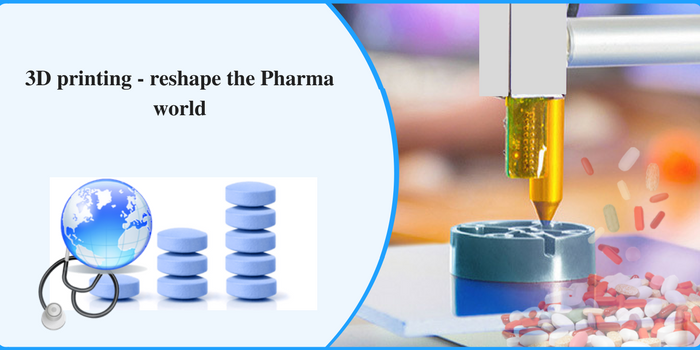How 3D printing can reshape the pharmaceutical world completely
You Are @ Home >> Articles >> Pharmaceutical drug manufacturers
The revenue generation in receipt of some of global pharmaceutical giants is much higher than the per capita income of some countries. In fact if we combine the earnings of major players like Roche, Pfizer and GlaxoSmithKline (GSK), it is equal to the quarterly expenditure of the U.S. federal government. So, pharmaceutical world covers a sizeable part of world economy. Pharmaceutical drug manufacturers India is also a large sector which has grown over the years.

Martin Wallace, GSK’s director of technology is advocating the fact that introducing new products in the pharma market has accentuated the success rate. Out of all the emerging technologies, 3D-printed pharmaceutical is one that can immensely improve the R&D productivity and add new benefits to the patients.
How the 3D printing sector looks like
3D printing has added new possibilities in the chapter of pharmaceutical research and bio-technology applications. 3D printing has multiple uses right from drug dosage forms to supporting delivery, or helping to research cures. Though the 3D printing technology exists for many years, but very recently it has been used in pharma world as well. Also known as Stereolithography, this technology can help you create almost any object by blending two different materials layer by layer to form a physical version of 3D image. Since 15 years, 3D printing has spread its wings across the healthcare industry, creating custom prosthetics to dental implants. Now, a new opportunity has come up in personalized healthcare too.
Drug research can be improved drastically using 3D printing. So far 3D printing technology has played a miniscule role in healthcare; however, in the years to come, it is likely to grow at a faster pace.
Below is some advancement that has occurred due to 3D printing that has changed the pharmaceutical world forever:
Tailored drug dosing
3D printing can add a whole new dimension to personalized medicine. Experts and researchers aims at producing customized 3D printed oral tablets. These personalized medications serve well for patients who respond to the same drugs in diverse ways.
Also, 3D printing allows pills to be printed in varied layers, using drug combination to treat multiple ailments at one shot. The idea behind this is to treat patients with multiple ailments with one single pill.
Unique dosage forms
3D printing can be used to create unique dosage forms for patients. Using inkjet-based 3D technology, limitless dosage forms can be created. This advancement can challenge the conventional drug production.
Understanding more complex drug release profiles
Drug release profiles enable the researcher to know how a drug is broken down and released when taken by the patient. 3D printing enables controlled drug release by printing a binder that allows the researchers to study the different variations of release more closely.
Printable living tissue
Though it will not be implemented anytime soon, but within 20 years, we can see a fully functioning 3D printed heart, liver and kidney. But for now, living tissues has been developed using this technology like human skin.
Since there is not much awareness on this technology, there is a lack of regulation on 3D printing. However, Pharmaceutical drug manufacturers India have gradually realized multiple opportunities in 3D printing especially for the healthcare sector and are coming up with new innovations.
